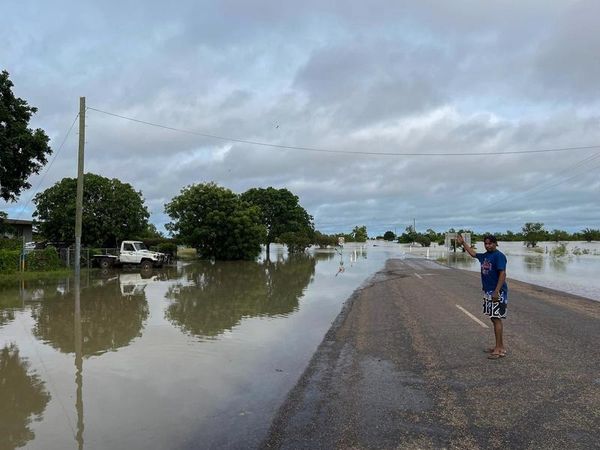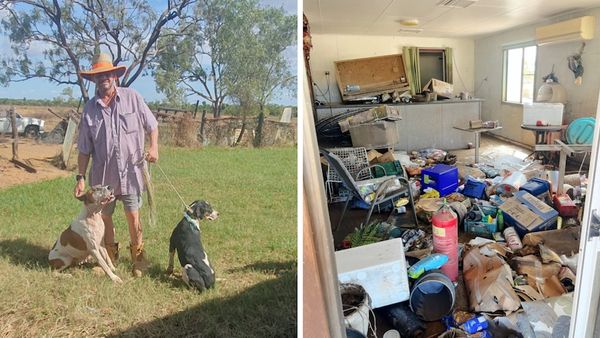
The leaders of two outback Queensland towns will meet with the prime minister to ask for millions of dollars in aid to repair flood-ravaged far north communities and the havoc wreaked on the livestock industry.
Hundreds of millions of dollars worth of cattle are feared lost, with at least 50,000 head believed to have been swept away and drowned in the floods.
Gulf of Carpentaria communities remain isolated after the region was lashed by late monsoon rains and record flooding.
Recovery efforts have been hampered by a lack of supplies.
Early estimates of 50,000 head of cattle lost could be far worse, with the industry fearing potential losses of more than 100,000.
"I don't think it'll be too long until we have an accurate figure. It'll be days rather than weeks," AgForce Queensland CEO Mike Guerin told AAP.
Most cattle in the Gulf region are for live export and international trade, Mr Guerin added, with industry damage expected in the hundreds of millions of dollars.
"You can put a figure of roughly $2000 a beast behind it, that describes the value of the beast itself but also the value lost in terms of the rebuild," he said.
Fuel has been replenished since the towns ran out of diesel and petrol, and food continues to be airlifted.
Major roads and highways remain closed, causing ongoing delays as residents tackle the arduous cleanup.
Burketown Mayor Ernie Camp and Doomadgee Aboriginal Shire Council CEO Troy Fraser are in Canberra pleading for a multi-million recovery package for the Gulf.
Cr Camp said that while locals are usually prepared for the notorious wet season of Australia's far north, nothing could have prepared the region for the catastrophic event.
Floodwaters peaked at unprecedented levels of seven to eight metres, at one stage rising 1.2 metres in just 15 minutes.
"The Gulf does flood but not to that extent. It caught everyone out," Cr Camp told AAP.
The focus for local government has turned to disaster resilience funding and community safety moving forward, he said.
He said the region would need $75 million just to repair bridges, but roads need to be raised and entire communities need to be flood-proofed if the region has any chance of surviving future flooding events close to that magnitude.
"You'll never flood-proof the Gulf, but you can make it more resilient. Some of these roads need to be 1.5 metres higher," Cr Camp said.
Funding would also be needed for future development to mitigate the risk and create communities capable of withstanding a major flood.
Doomadgee CEO Troy Fraser said the town was unprepared for disaster, with the town's water and sewerage services not updated in 30 years since they were first installed with stormwater drains flooding regularly.
Locals who fear being stranded park a safe distance from their homes, trekking up to three kilometres at a time to access properties.
"What follows now? Rivers will come down but we still don't have access," Mr Fraser said.










